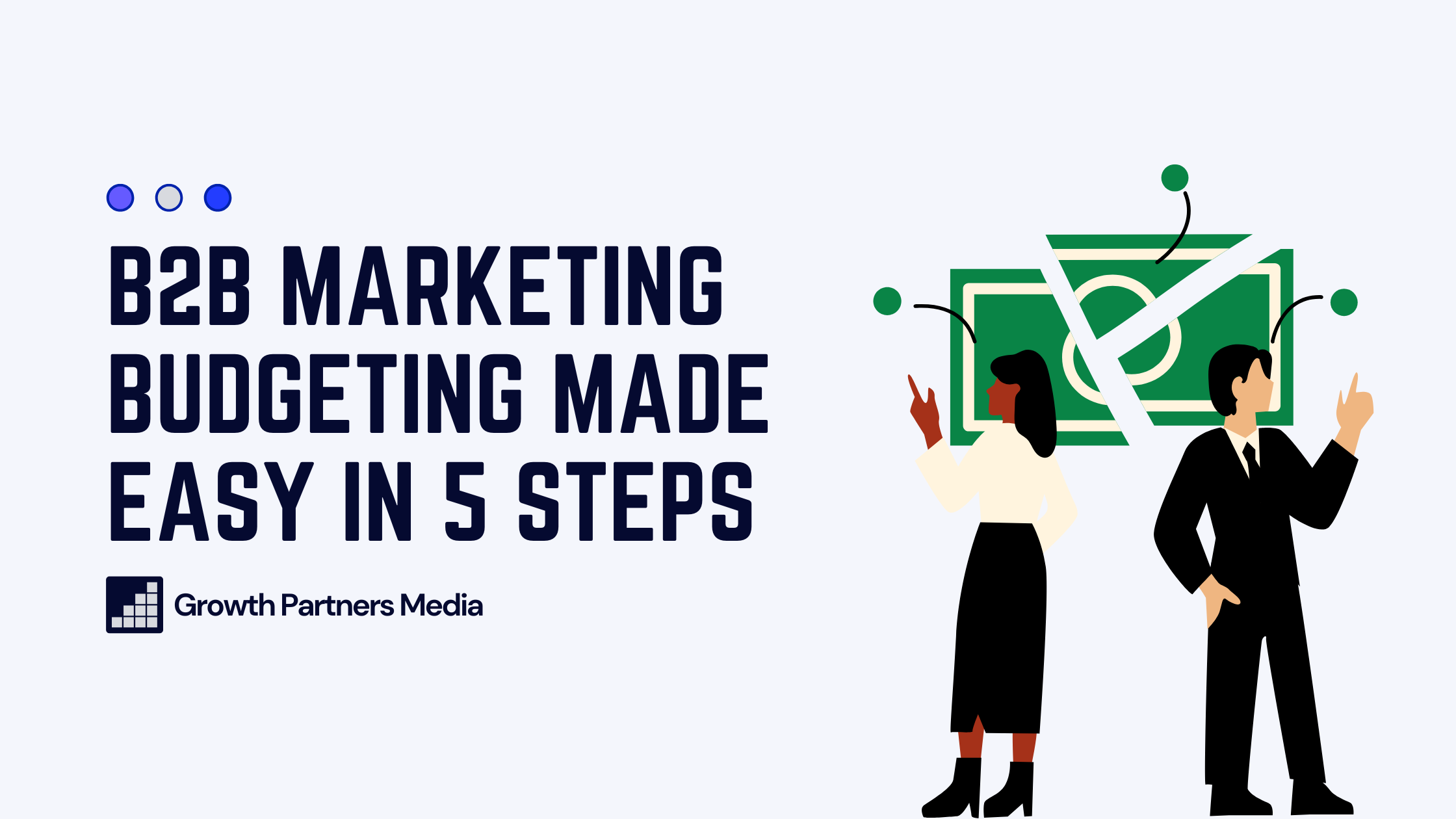Most B2B marketing budgets are either bloated in the wrong areas or stretched too thin where it actually matters.
The result?
Wasted ad spend, underperforming campaigns, and missed revenue opportunities.
At Growth Partners Media, I’ve seen this happen repeatedly on calls with business owners. They pour money into tactics that sound good on paper but fail to drive sustainable growth. Others hold back too much, afraid of overspending—only to watch competitors dominate the market.
A smart B2B marketing budget isn’t just about numbers—it’s about strategic allocation.
The right budget fuels revenue, maximizes ROI and ensures every dollar works harder for your business.
In this guide, I’ll show you exactly how to build a high-impact B2B marketing budget using a structured, no-nonsense approach.
Here’s what we’ll cover:
- A step-by-step methodology for budgeting effectively.
- Industry benchmarks to help guide your allocations.
- Prioritization frameworks to optimize spend.
- Actionable templates for stress-free budget planning.
By the end, you’ll have a clear, strategic budget blueprint for your B2B marketing efforts—one that sets you up for predictable, scalable growth.
Let’s get into it.
TL;DR: Fast-Track Your B2B Marketing Budget Allocation
A strong B2B marketing strategy isn’t about spending more—it’s about spending smarter.
Here’s how to allocate your budget for maximum impact:
|
Step |
Key Focus |
Impact |
Budget Priority |
|
1. Set Revenue-Based Marketing Goals |
Align budget with revenue targets |
🚀 Mission-Critical |
🔵 Top Priority |
|
2. Benchmark Against Industry Standards |
Use data-driven comparisons |
📈 Valuable |
🟠 Important |
|
3. Identify Core Marketing Channels |
Prioritize high-ROI strategies |
🎯 High-Impact |
🔵 Top Priority |
|
4. Allocate Budget Based on Funnel Stages |
Balance brand awareness vs. lead gen |
📈 Valuable |
🟠 Important |
|
5. Measure & Optimize Continuously |
Track spend efficiency |
🚀 Mission-Critical |
🔵 Top Priority |
A great B2B marketing budget is built on strategy, not guesswork. When every dollar is allocated with purpose, your marketing efforts drive real, measurable growth.
Step 1: Set Revenue-Based Marketing Goals
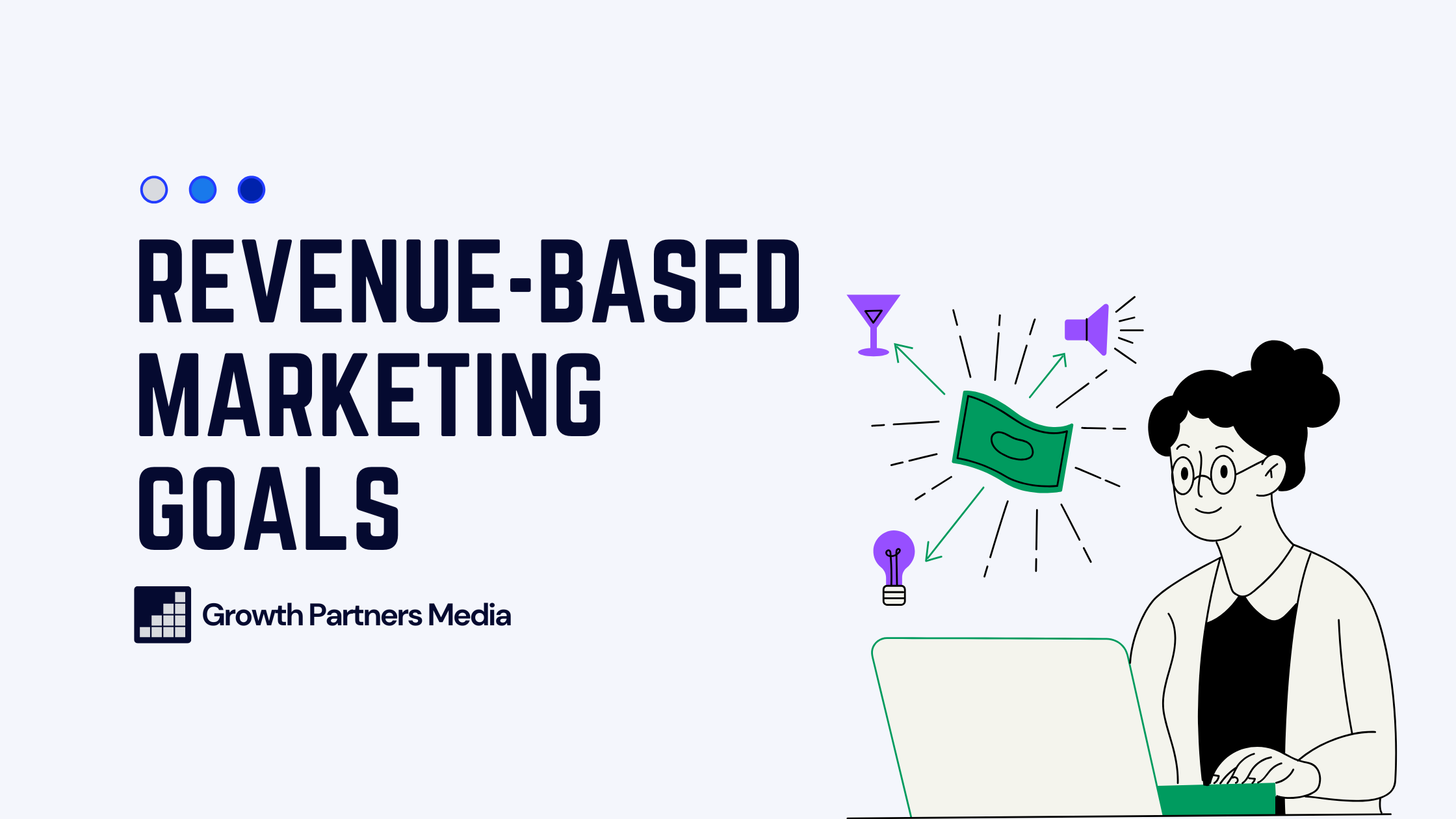
Your marketing budget shouldn’t be a random number—it should be directly tied to your revenue goals.
Too often, companies set budgets based on last year’s spend or a gut feeling. But in B2B marketing strategy, every dollar should be working toward revenue growth.
A simple rule of thumb:
- B2B companies typically allocate 7–12% of projected revenue to marketing.
That’s a useful benchmark, but the real key is aligning your budget with overall business objectives.
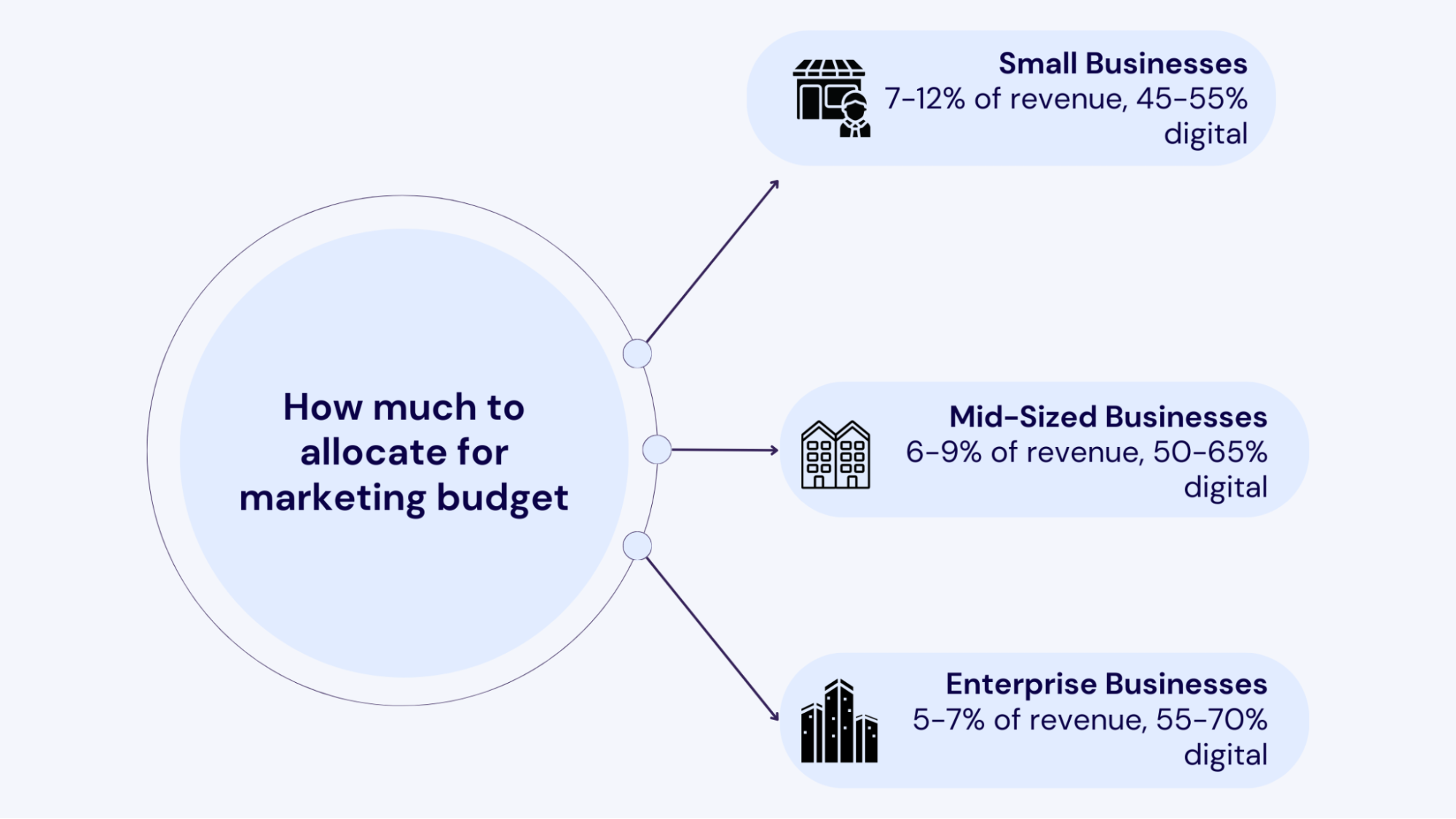
Questions to Ask Before Budgeting
- What are our revenue targets for the next 12 months?
- How much pipeline generation does marketing need to contribute?
- What’s our current Customer Acquisition Cost (CAC), and where can we improve?
Each of these factors influences how much you should invest in marketing to hit growth goals.
✅ Action Item – Calculate your ideal marketing budget range based on revenue targets. Use your industry benchmark as a guide, then adjust based on your specific business model, CAC efficiency, and growth objectives.
Your company revenue and bottom line growth metrics often inform your marketing budget. Use the YOY growth calculator to identify your business growth rate.
Step 2: Use B2B Marketing Budget Benchmarks for Smarter Planning
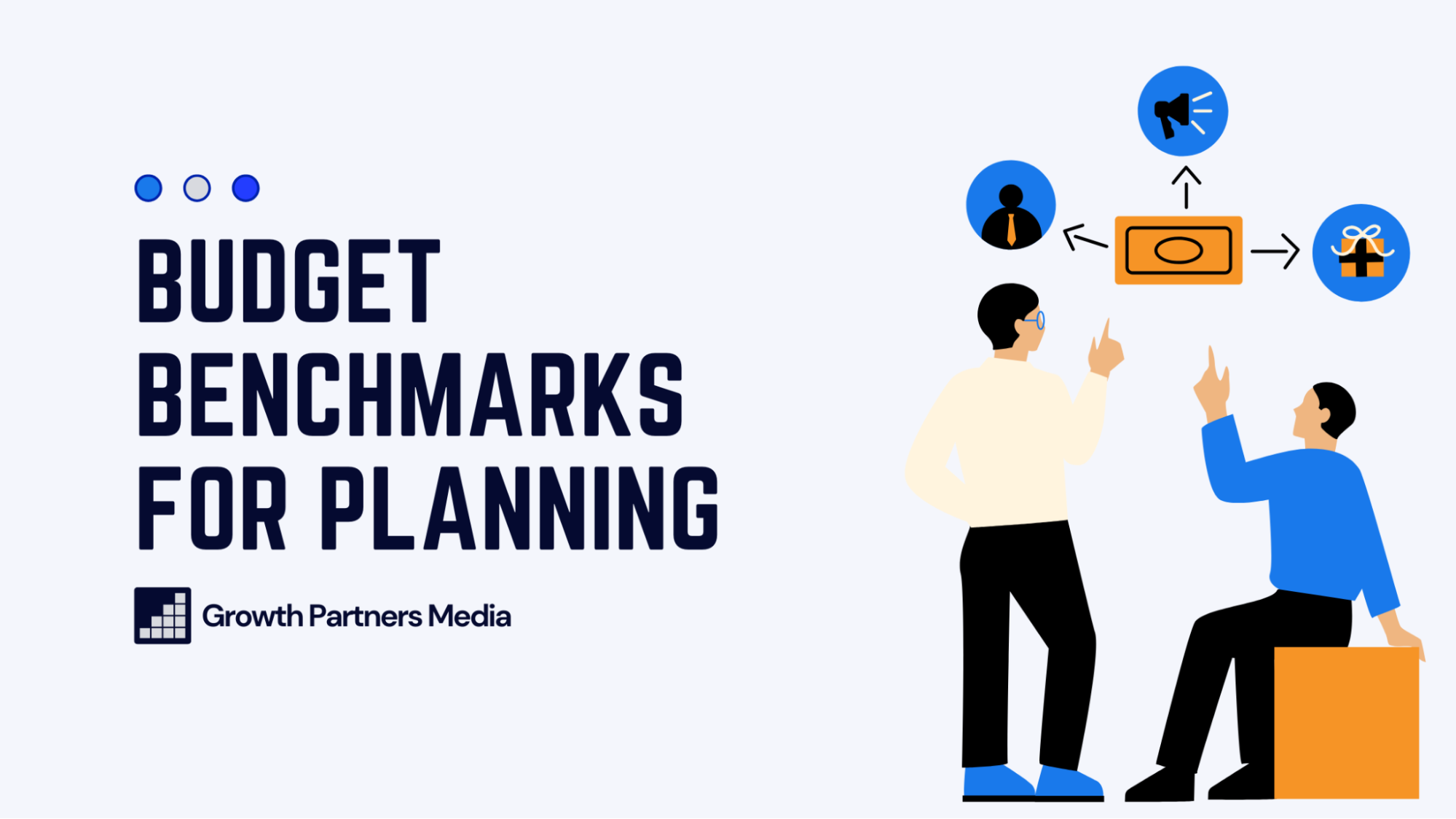
Marketing budgets are like gym memberships—some companies invest heavily and see results, while others… well, they hope for the best.
How much should you be spending?
It depends on your industry, business model, and growth stage—but luckily, we have benchmarks, so you don’t have to guess.
Marketing Budget Benchmarks (% of Revenue by Industry)
|
Industry |
Marketing Budget (% of Revenue) |
Key Considerations |
|
SaaS & Tech |
10-15% |
Need to feed the content machine & fight churn |
|
Professional Services |
5-10% |
Thought leadership, networking & looking smarter than the competition |
|
Manufacturing |
3-7% |
Trade shows, lead nurturing & proving you’re not just a factory |
|
E-Commerce |
12-20% |
Paid ads galore—because no one finds your site by accident |
Remember, benchmarks are just that—a benchmark. They provide a reference point, but some companies will need to invest more to stay competitive.
And some companies, like Cognota, invested less but grew smarter. By creating the LearnOps category and targeting enterprise buyers, they scaled to $6M ARR in three years—outpositioning, not outspending.
If you’re in a hyper-competitive market, you may have to outspend rivals to gain visibility and stand out. If you’re entering a new market, a bigger budget is often necessary to build awareness and generate leads. For VC-funded startups, aggressive spending may be required to scale quickly before reaching profitability.
Spending above industry norms isn’t wasteful if it’s strategic. The key is ensuring that every dollar spent drives a measurable return on investment.
For SEO, you can use our ROI calculator to quickly project spend and potential returns for your business.
How to Adjust Your Budget
- Growth-stage companies should invest more in demand generation to drive awareness and pipeline growth.
- Mature businesses should shift focus toward brand awareness, customer retention, and advocacy to maximize lifetime value.
✅ Action Item – Compare your planned spend to industry benchmarks, but don’t treat them as rigid rules. If your budget is significantly below the average, you may be limiting your growth potential. If it’s above, make sure the extra investment is strategic—fueling competitive advantage, market expansion, or faster scaling. Adjust based on your company’s goals, market conditions, and expected return on investment.
Step 3: Prioritize the Right B2B Marketing Channels
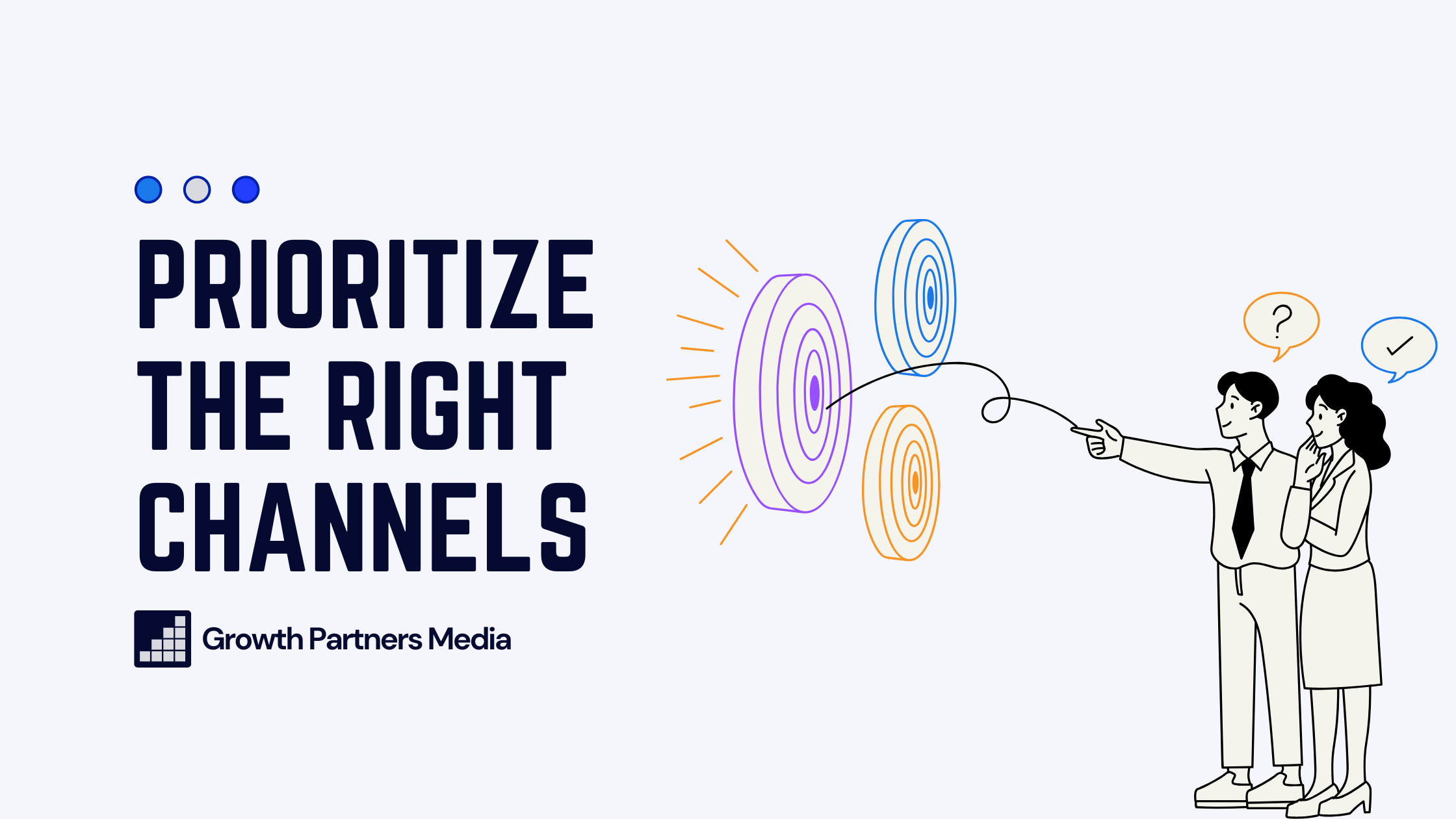
Not all marketing channels perform equally—especially in B2B marketing, where the sales cycle is longer and buying decisions are complex.
To maximize ROI, you need to allocate a budget where it drives the most value.
Here’s a breakdown of how B2B companies typically distribute their marketing spend:
|
Channel |
Typical % of Budget |
Best for |
|
SEO & Content Marketing |
15-30% |
Long-term growth & inbound leads |
|
Paid Ads (Google, LinkedIn) |
20-40% |
Immediate lead generation |
|
Email Marketing & Nurturing |
10-20% |
Engaging existing leads |
|
Events & Webinars |
10-25% |
Building relationships, high-ticket sales |
|
Partnerships & Referral Programs |
5-15% |
Leveraging industry networks |
Many companies waste marketing dollars and miss company goals by:
- Spreading budget too thin across too many marketing channels instead of focusing on high-performing strategies.
- Investing in low-converting paid ads without optimizing landing pages, targeting, and ad creatives.
- Underinvesting in organic marketing like SEO and content, which provide sustainable long-term traffic.
Case Study: Prioritizing SEO for Red Stag Fulfillment
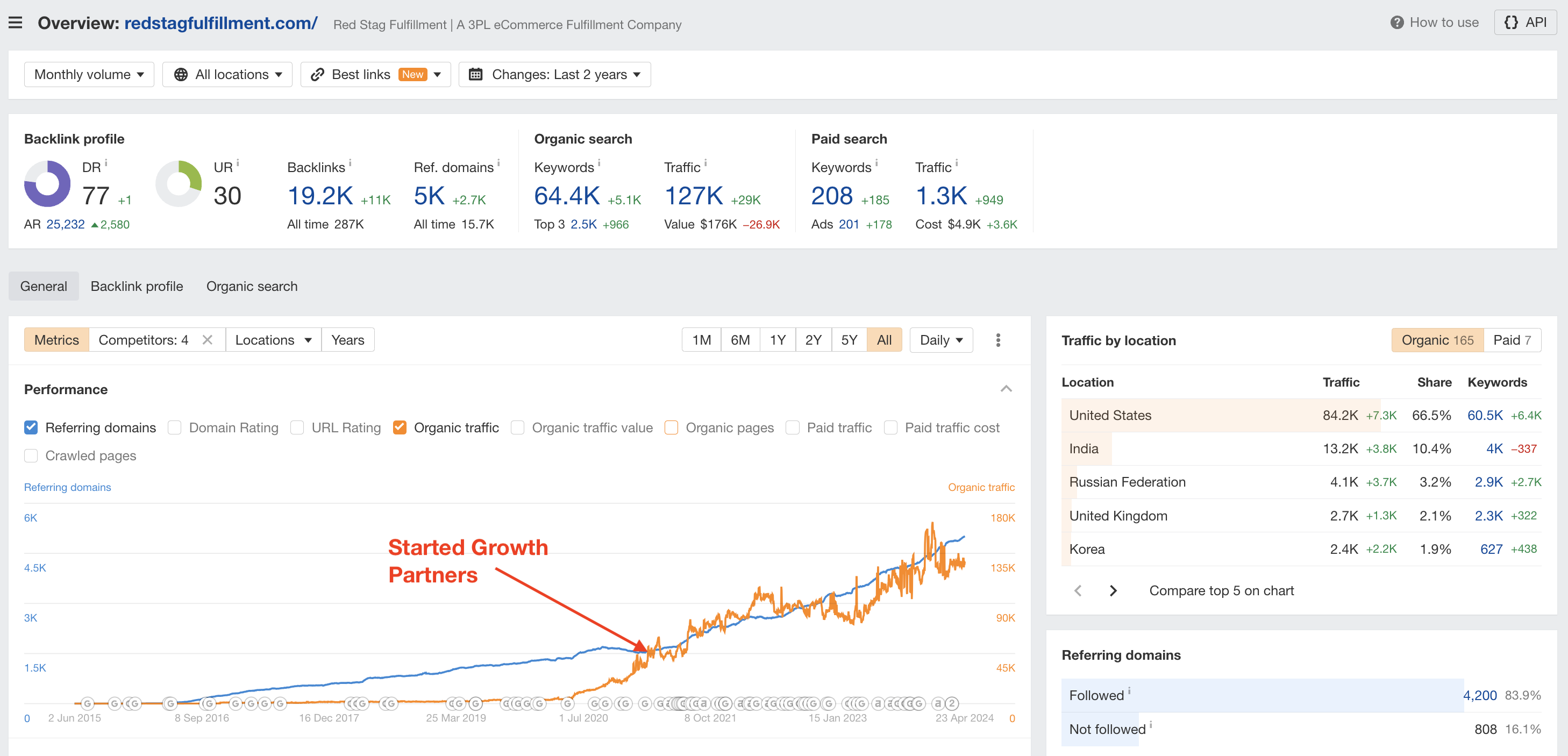
We worked with Red Stag Fulfillment, a U.S.-based third-party logistics (3PL) company specializing in high-speed, precision services for e-commerce businesses.
Despite their established presence, Red Stag faced challenges in a competitive market, including:
- Competing with industry giants like UPS and ShipBob, sharing over 30,000 overlapping keywords.
- Navigating 23 Google algorithm updates during our partnership.
- Establishing themselves as a thought leader in the U.S. 3PL sector.
To address these challenges, we helped Red Stag implement a comprehensive SEO strategy focusing on content creation and off-page optimization.
As a result, they doubled their organic content, refreshed existing material, and emphasized niche topics, such as guides for automotive and bike sellers.
Our off-page efforts included a multi-faceted approach focusing heavily on Herd Links™ (our service where you can buy forum backlinks), leveraging user-generated content on platforms like Quora and Reddit.
As a result, Red Stag’s monthly visitors increased from 44,332 to 109,786 by July 2023, and their first-page keyword rankings quadrupled. This case underscores the importance of prioritizing SEO in B2B marketing to achieve significant growth.
✅ Action Item – Map out your channel allocation based on your business priorities. Focus your budget on the digital marketing channels that align with your revenue goals, sales cycle, and audience behavior.
Step 4: Allocate Budget by Funnel Stage
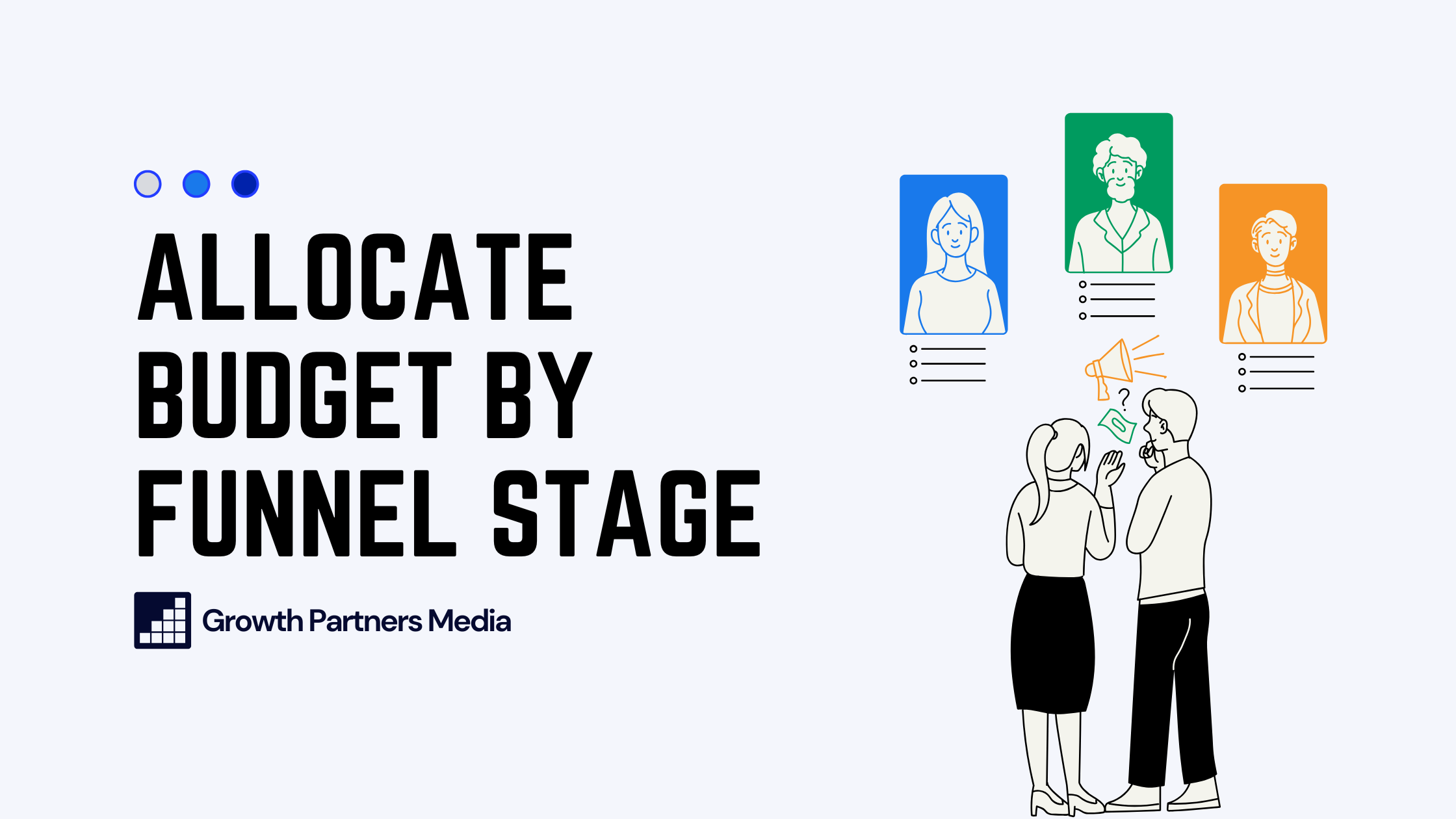
A well-structured B2B marketing budget isn’t just about choosing the right channels—it’s about spending at the right stage of the buyer’s journey.
If you pour too much into top-of-funnel (TOFU) efforts, you’ll generate awareness but struggle to convert leads into customers. Like digging your own grave just to prove you own a shovel—sure, people notice, but it’s not getting you anywhere good!
On the other hand, if most of your budget is focused on bottom-funnel (BOFU) tactics, you might close deals—but you’ll eventually run out of new prospects.
The key is balance.
Because a sales funnel that’s all top or all bottom is basically a traffic cone, not a pipeline.
From personal experience, I’ve noticed that most companies under-invest in their marketing strategy. They don’t build out their foundations properly.
In SEO, this translates into a wasted budget on fruitless content that doesn’t generate leads. Or content that simply cannot compete for top-ranking positions.
Here’s a funnel-based budget model to ensure you’re investing in brand awareness, lead nurturing, and conversion-focused strategies:
|
Funnel Stage |
Budget % |
Key Activities |
|
Awareness (TOFU) |
30-40% |
SEO, content marketing, PR, industry events |
|
Consideration (MOFU) |
30-40% |
Paid ads, webinars, case studies, email marketing |
|
Decision (BOFU) |
20-30% |
Retargeting, sales enablement, conversion optimization (CRO) |
How to Optimize Your Budget Allocation
- If your funnel is too top-heavy – You’re generating brand awareness, but leads aren’t converting. Shift budget toward middle and bottom-funnel tactics like retargeting, sales enablement, and CRO.
- If your lead volume is low – You may be overly focused on conversion without attracting enough potential customers. Invest more in SEO, content marketing, and paid awareness campaigns to grow your pipeline.
- If conversion rates are low across the board – Evaluate funnel friction points and improve nurture sequences, landing page performance, and sales processes.
✅ Action Item – Assess your budget allocation across the funnel. If you’re seeing too many unqualified leads or low conversion rates, adjust your investment strategy to drive both awareness and demand capture.
Step 5: Measure & Optimize Continuously

A budget is only as good as its measurable impact.
The best B2B marketers don’t just set a budget and walk away—they track, analyze, and optimize continuously to maximize ROI.
Here are the key performance metrics to monitor:
|
Metric |
Why It Matters |
|
Customer Acquisition Cost (CAC) |
Measures efficiency of marketing spend |
|
Marketing-Generated Pipeline % |
Shows marketing’s contribution to revenue |
|
ROI by Channel |
Helps optimize spend allocation |
|
Cost per Lead (CPL) |
Identifies cost-efficiency of lead generation |
Your budget shouldn’t be static—it should evolve based on performance data. Here’s when to make strategic shifts:
- If CAC is rising – Reevaluate paid channels & lead nurturing efforts.
- If organic traffic is plateauing – Increase investment in SEO & content.
- If the pipeline is too reliant on one source – Diversify the budget across multiple channels.
Measuring & Optimizing in Action
Bacula Systems, an enterprise backup software provider, exemplifies the power of continuous optimization.
Their goal was to increase trial sign-ups, but performance data revealed a bottleneck: their registration form was too complex, deterring potential customers. Instead of simply increasing traditional advertising spend, they analyzed conversion metrics, identified friction points, and optimized the user experience.
By streamlining the trial sign-up form—removing unnecessary fields and reducing friction—they saw a 43% increase in conversions without increasing their marketing budget.
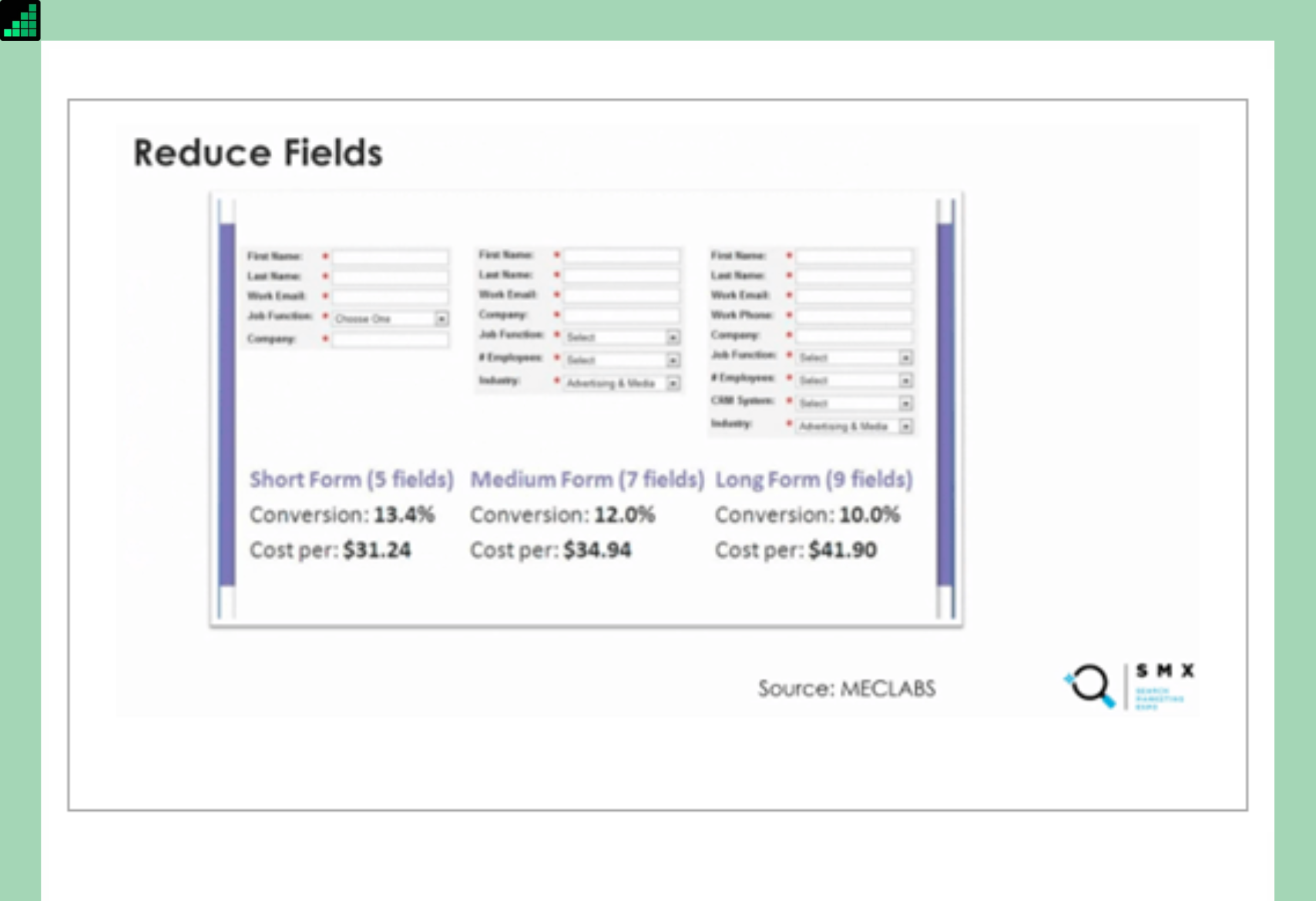
This demonstrates that budget optimization isn’t just about cutting costs or spending more—it’s about reallocating resources based on performance insights.
✅ Action Item – Set quarterly budget reviews to analyze performance and optimize spend. Small, data-driven adjustments throughout the year will keep your marketing budget lean, efficient, and ROI-driven.
Final Takeaways: Build a Scalable B2B Marketing Budget
A smart, scalable business-to-business marketing budget isn’t about spending more—it’s about spending strategically.
Here’s what to remember:
✔ Anchor your budget to revenue goals—not arbitrary percentages.
✔ Use industry benchmarks as a baseline, but refine based on your business needs.
✔ Balance brand-building & lead generation to drive sustainable, long-term growth.
✔ Measure & adapt regularly to optimize cost efficiency and maximize ROI.
At the end of the day, your budget isn’t a fixed document—it’s a dynamic strategy. The more you refine, track, and optimize, the better positioned your company will be to outpace competitors and drive predictable, scalable growth.
Now, it’s time to put this into action. 🚀
- How to Outsource Backlink Building Without Stress [2025] - October 7, 2025
- Top 3 SEO Outreach Services That Actually Work [2025] - October 7, 2025
- 9 White-Hat Link Building Techniques For AI & Google (2025) - September 23, 2025

